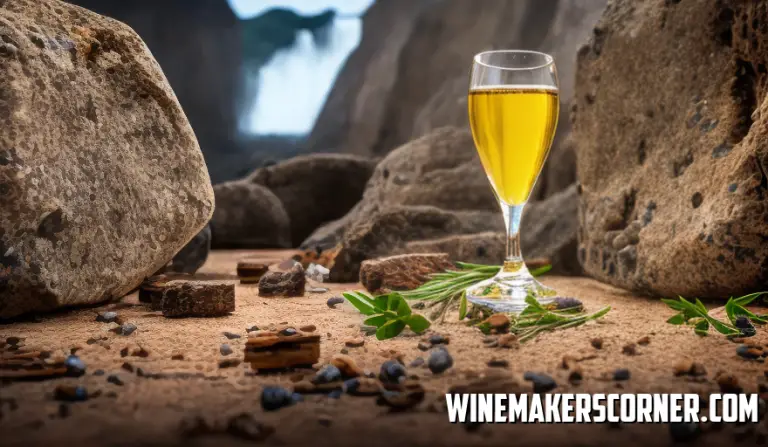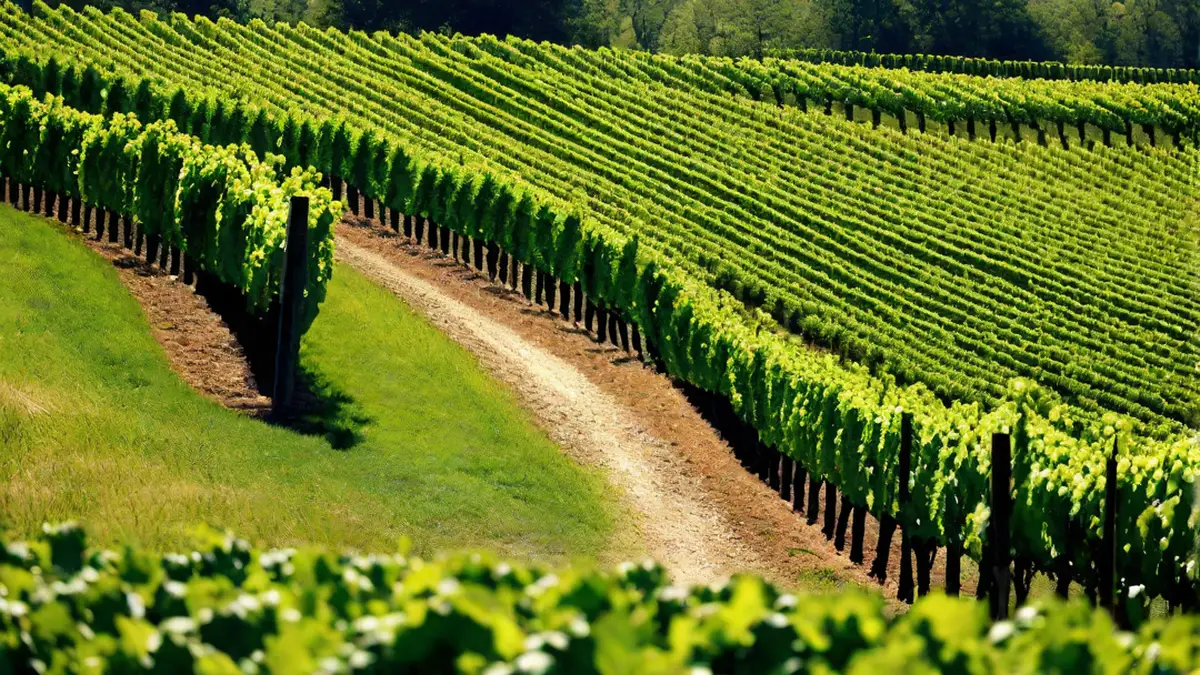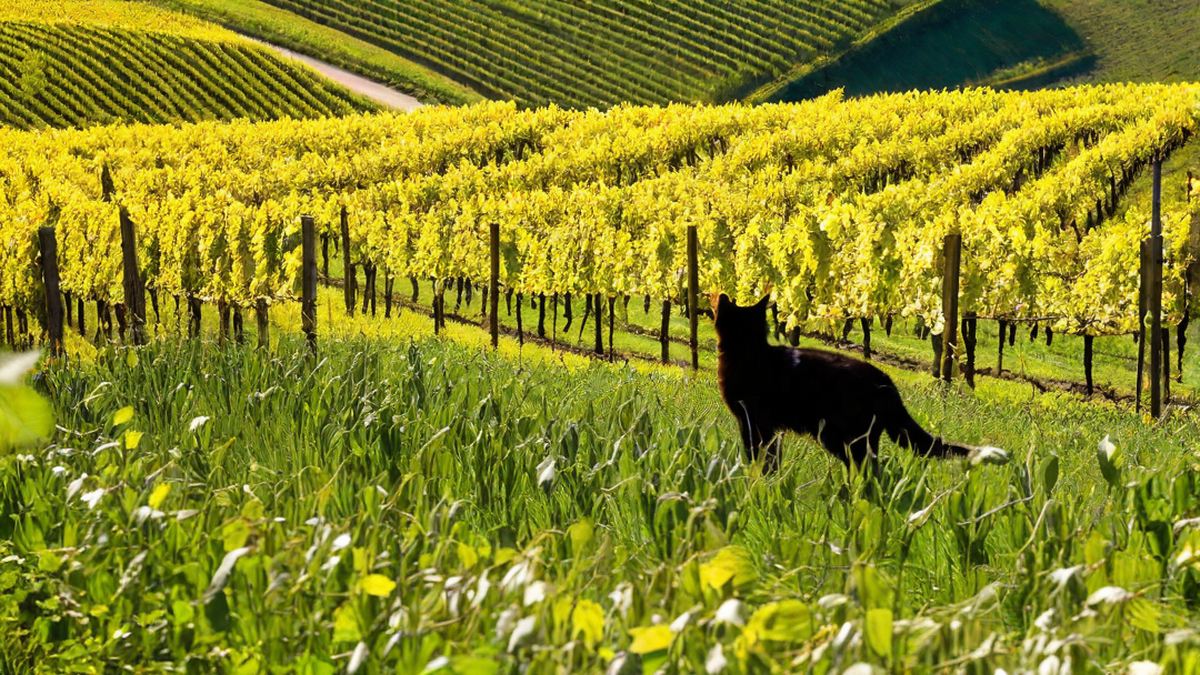Welcome to the captivating world of wine where every sip takes you on a journey. Amidst the range of wine choices there’s one name that stands out for its charming allure and delightful flavors. Moscato. Get ready to embark on an adventure as we delve into the depths of this exquisite white wine. From its history, to its unique characteristics from the meticulous process of growing and harvesting grapes to the artistry involved in fermentation and aging we’ll unveil the secrets behind Moscatos irresistible appeal. So grab your glass. Join us as we uncover the magic that Moscato has to offer!
Overview of Moscato Wine
Moscato, also called Muscat has become quite popular in years as a delightful white wine choice. It is renowned for its fruity and sweet flavors making it a favorite among those who prefer sweeter wines. Moscato is crafted from the Muscat grape variety, which holds the distinction of being one of the grape varieties globally.
The roots of Moscato can be traced back to civilizations such as Greece and Egypt. The cultivation of Muscat grapes has been ongoing for centuries due to their qualities. People often describe wines made from these grapes as having hints of citrus, peach, apricot and orange blossom.
One notable characteristic of Moscato wine lies in its alcohol content. Most Moscato wines contain around 5% to 7% alcohol by volume making them an attractive choice for those seeking less intoxicating beverages. This lower alcohol content contributes to the wines sweetness and refreshing nature.
Typically served chilled Moscato wines are enjoyed as either an aperitif or a dessert wine. They pair well with an array of foods including fruits, light cheeses, seafood dishes and even spicy cuisine. The sweetness, in Moscato can help balance out the spiciness in dishes while enhancing the flavors of fruits and cheeses.
In times Moscato has become quite popular among younger wine enthusiasts. Its easy to like taste and affordability make it an appealing option for those who’re new, to wine or seek something beyond the traditional dry whites.
Overall Moscato offers a flavor experience that attracts a wide range of tastes. Its sweet and fruity characteristics make it perfect for those who prefer wines or enjoy sweeter flavors. Whether sipped on its own or accompanied by food Moscato delivers an delightful drinking experience that continues to gain popularity.
History and Origins of Moscato
Moscato, an adored and well liked wine has a past with intriguing origins. This type of wine can be traced back to ancient Greece, where it was known as “Moschaton.” The name comes from the word “moschos,” which means musk or musky aroma perfectly describing the delightful scent of this wine.
Centuries later during the Renaissance period in Italy Moscato gained recognition. Italian winemakers acknowledged the qualities of this grape and started cultivating it in regions like Piedmont and Sicily. The aromatic nature of Moscato quickly captivated wine enthusiasts across Europe.
An interesting aspect of Moscatos history is its association with nobility and royalty. It was frequently served at banquets hosted by kings and queens who appreciated its sweet taste and fragrant aroma. As a result Moscato gained popularity throughout Europe. Became a highly sought after beverage among high society.
In times there has been a resurgence in global popularity for Moscato. Its bodied nature, refreshing sweetness and lively effervescence make it a beloved choice, for those who prefer sweeter wines. Whether enjoyed on its own or paired with desserts or spicy dishes Moscato provides a sensory experience that appeals to many different palates.
Today you can find Moscato vineyards in parts of the world including California, Australia and South Africa. Each region brings its unique flair to the production process while staying true to the essence of this beloved wine.
In summary the history of Moscato is intertwined with civilizations and European aristocracy. Its roots in Greece and subsequent rise to fame, in Italy have shaped its reputation as a white wine variety. With its enchanting aromas and delightful flavors Moscato continues to captivate wine enthusiasts.
Characteristics of Moscato Wine
Moscato stands out as a type of wine renowned for its distinct qualities. It is often described as having an fruity taste, reminiscent of peach, apricot and orange blossom flavors. This wine offers a light and invigorating sensation making it a popular choice among those who appreciate wines.
One notable characteristic of Moscato is its low alcohol content. Typically ranging from 5% to 7% Moscato wines have less alcohol compared to many other white wine varieties. This makes it an ideal option for individuals seeking to savor a glass of wine without feeling overly intoxicated.
Another aspect that sets Moscato apart is its effervescence. Many Moscato wines exhibit a fizziness that enhances their overall charm and appeal. This delicate sparkle elevates the experience providing each sip with a delightful effervescence.
Moscato also complements types of cuisine exceptionally well. Its sweetness makes it an excellent accompaniment to dishes as it helps balance out the heat. Furthermore it pairs beautifully with desserts like fruit tarts or creamy cheesecakes.
In terms of appearance Moscato wines typically display hues ranging from yellow to golden, in color. Their clarity and brightness contribute to their allure.
Moscato is a delightful white wine that is renowned for its sweet taste, gentle alcohol content, bubbly nature and incredible adaptability when it comes to pairing it with food. Whether sipped on its own or accompanied by your preferred dish this wine guarantees a one of a kind and pleasurable tasting adventure, for all wine lovers.
Different Varieties of Moscato
Moscato, an fragrant wine comes in various types that cater to different tastes and preferences. One of the beloved variations is Moscato Bianco, also known as Moscato white wine. This type is crafted from the Muscat Blanc grape renowned for its fruity flavor profile. With its yellow hue and gentle fizziness Moscato white wine is favored by wine enthusiasts who appreciate a light and revitalizing beverage.
Another noteworthy variation of Moscato is Moscato d’Asti. Originating from Italys Asti region this sparkling wine offers a twist on traditional Moscato. It undergoes a natural fermentation process that results in alcohol content compared to other wines. The outcome? A sweeter taste enriched with delicate hints of peach, apricot and honey. Perfect for those seeking a treat that pairs well with desserts or can be savored on its own.
For individuals yearning for an effervescent experience there’s also Moscato Spumante. This sparkling rendition of Moscato boasts bubbles and a crisp finish. With its heightened carbonation level and zesty acidity it presents an invigorating contrast, to the sweetness typically associated with Moscato wines.
Whether enjoyed as a dinner drink or matched with seafood or light salads Moscato Spumante brings a touch of sophistication to any occasion.
Apart from these known types there are also regional variations of Moscato found all around the world. For instance California produces its version of this beloved wine known as California Moscato. These wines often showcase fruit flavors like citrus and melon while retaining the delightful sweetness that makes Moscato so well loved.
To summarize moscato white wine refers to a type of this beloved beverage crafted from Muscat Blanc grapes. However there are variations like Moscato d’Asti and Moscato Spumante that offer distinct characteristics and flavors. Whether you fancy a still wine or a sparkling version, with lively bubbles you’ll find a Moscato that suits your palate perfectly. So go ahead indulge in the delightful universe of Moscato wines and explore your preferred variety today!
Growing and Harvesting Moscato Grapes
Moscato grapes, also known as Muscat grapes are utilized in the production of an popular sweet white wine referred to as Moscato. These grapes have a history and are believed to be among the oldest grape varieties worldwide. The successful cultivation of Moscato grapes necessitates growing conditions and careful harvesting approaches to ensure exceptional flavor and quality.
When it comes to cultivating Moscato grapes the selection of the vineyards location is crucially important. These grapes flourish in climates with abundant sunshine since they require ample heat for full ripening. The soil should possess drainage capabilities to prevent waterlogging and promote healthy root growth. While they can adapt to soil types Moscato grapes tend to thrive best in sandy or loamy soils.
To initiate the cultivation process vineyard owners typically plant Moscato grapevines during spring or early summer when the soil has adequately warmed up. These vines require systems like trellises or wires, for proper growth. As they mature regular pruning becomes essential to manage their growth and enhance fruit production.
Harvesting Moscato grapes generally occurs during summer or early autumn when the fruits have attained peak ripeness. This timing is crucial as it determines both sugar content and flavor characteristics of the resulting wine.
Harvesting grapes early can result in picking them before they fully ripen while waiting too long may lead to picking overripe grapes that lack acidity.
During the harvest season workers in the vineyard carefully hand select each cluster of Moscato grapes ensuring only the best quality fruits are chosen for production. This meticulous process allows for picking based on factors like color, size and overall health of each bunch.
Once picked these delicate grapes are swiftly transported to wineries, for processing. They undergo a pressing method to extract their juice while preserving their aromatic compounds. Fermentation then takes place using yeast strains that enhance their unique fruity flavors.
To sum up cultivating and harvesting Moscato grapes requires attention to detail and a deep understanding of the grapes requirements. From choosing the vineyard location to hand selecting the finest clusters every step contributes to achieving the exceptional quality found in Moscato white wine. So time you savor a glass of this sweet and fragrant wine remember the remarkable journey it undertook from vineyard to bottle.
Making White Wine from Moscato Grapes
Is Moscato truly a wine despite its association with the sweet and aromatic grape variety? Lets delve into the captivating world of winemaking to unveil the truth.
To comprehend the essence of Moscato wine we must begin with an exploration of the grapes themselves. Moscato grapes come in shades ranging from white and pink to even black. However it is predominantly the light colored grapes that are typically utilized in crafting Moscato wines. These particular grapes are renowned for their sugar content and distinctive floral fragrance.
The winemaking process commences by harvesting fully ripened Moscato grapes at their optimal sugar levels. Once gathered gentle crushing is employed to extract their juices. Unlike wines that undergo fermentation together with their skins white wines such as Moscato solely ferment their grape juice.
Following the crushing and extraction of juice from the grapes it enters a transformative phase known as fermentation. Fermentation occurs when yeast consumes the sugars within the grape juice and converts them into alcohol. This metamorphosis takes place within temperature controlled stainless steel tanks to safeguard the flavors and aromas synonymous with Moscato.
Throughout fermentation vintners diligently monitor factors such, as temperature and sugar levels to achieve desired outcomesSome winemakers might choose to halt the fermentation process before it is fully completed in order to retain a level of sweetness in the wine. This results in Moscato wines that have a dry or semi sweet taste.
After fermentation the young wine is typically given a period of aging before it is bottled and ready for consumption. During this aging process the flavors of the wine blend together. Become more complex over time. However there are also styles of Moscato that are best enjoyed when they are young and fresh as this helps to maintain their vibrant fruity characteristics.
So can we consider Moscato as a wine? Technically speaking, yes! While there may be some variations in color among types of Moscato grapes used in winemaking most commercially available Moscato wines are primarily made from white or lightly colored grapes.
In conclusion Moscato is a white wine renowned for its sweetness and aromatic qualities. Whether you choose to enjoy it as a dessert wine or as a sip, on a sunny day the appeal of Moscato lies in its unique flavors and undeniable charm. So go ahead pour yourself a glass of Moscato and savor the joy it brings!
Fermentation Process for Moscato Wine
Moscato wine, also known as Muscat is a liked variety of white wine cherished for its delightful and fruity taste. Have you ever pondered over the process behind creating this wine? Well it all commences with the magic of fermentation.
Fermentation is a natural chemical transformation that converts sugars into alcohol. In the case of Moscato wine winemakers typically utilize Muscat Blanc grapes known for their high sugar content. These grapes are a choice when aiming to produce a sweet and luscious wine like Moscato.
The process starts by crushing the grapes to extract their precious juice. This juice is then carefully transferred to fermentation vessels, which commonly include stainless steel tanks or oak barrels. To kickstart fermentation yeast is introduced to the juice.
During fermentation yeast diligently consumes the sugars in the grape juice and skillfully transforms them into alcohol. The duration of this process can vary depending on factors such as temperature and desired sweetness level—ranging from a days, to several weeks.
What makes Moscato wine production intriguing is that winemakers often choose to halt fermentation before all the sugar has been fully converted into alcohol. This intentional decision helps preserve some of the grapes natural sweetness and imparts Moscato with its iconic fruity flavors.
Once the fermentation process is finished the wine is usually aged for a period to enhance its flavors. Then it goes through clarification and filtration procedures to eliminate any impurities before it is bottled and ready to be enjoyed.
To sum up Moscato wine undergoes a fermentation process that converts grape sugars into alcohol while preserving its sweet and fruity characteristics. It is this blend of flavors that makes Moscato a beloved white wine, among enthusiasts worldwide. So the time you savor a glass of Moscato take a moment to appreciate the craftsmanship involved in its creation!
Aging and Bottling Moscato Wine
Is Moscato wine always white? This is a question among wine enthusiasts and the answer is both yes and no. Let me clarify. Moscato wine can actually come in colors. White, pink or even red. However when people typically refer to “Moscato ” they generally mean the white variety.
Now lets delve into the topic of aging and bottling Moscato wine. Similar to other wines Moscato can benefit from aging. By allowing it to age the flavors and aromas get a chance to develop further resulting in an intricate and refined taste profile. Nevertheless not all Moscato wines are intended for aging purposes. In fact most Moscatos are best enjoyed when they are young and fresh.
Speaking of bottling Moscato wine there are a factors worth considering. Firstly the type of closure used plays a role. Screw caps have gained popularity as a method, for sealing bottles of Moscato because they ensure an airtight seal while preventing any potential cork related issues that may affect the taste. Additionally screw caps make it convenient to reseal the bottle if you don’t finish it all at once.
Moreover it’s worth noting that the size of the bottle can also impact how Moscato wine ages over time.
Moscato wines are typically bottled in sizes, such as 375ml or 750ml bottles. They are often enjoyed as dessert wines. Served as an apéritif.
In summary is moscato considered a wine? Yes! However it’s important to note that it can also be found in colors like pink or red. When it comes to aging and bottling Moscato wine it’s crucial to consider its intended purpose – whether its meant for consumption or for aging in your cellar. So the time you’re seeking a refreshing glass of wine, with fruity notes and a hint of sweetness don’t hesitate to give Moscato a try!
Conclusion
In conclusion, Moscato is indeed a white wine that has gained popularity for its unique characteristics and delightful flavors. Its origins can be traced back to ancient times, and it has evolved into various varieties over the years. The process of growing and harvesting Moscato grapes requires careful attention to ensure optimal quality. From there, the grapes are transformed into white wine through a meticulous fermentation process. The result is a refreshing and aromatic wine that is enjoyed by many wine enthusiasts around the world. Whether you prefer a dry or sweet Moscato, there is no denying the charm and allure of this beloved white wine. So next time you’re in search of a delightful glass of white wine, consider reaching for a bottle of Moscato and indulge in its unique flavors and aromas.




